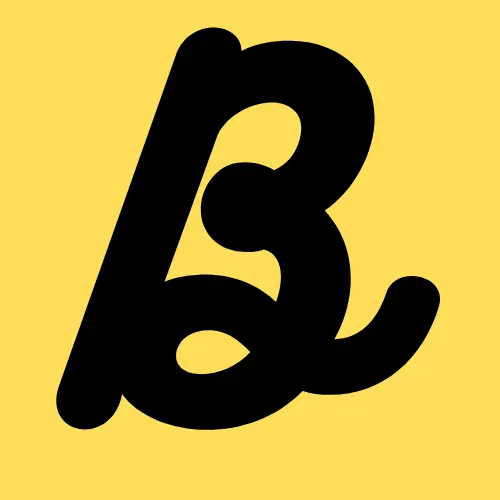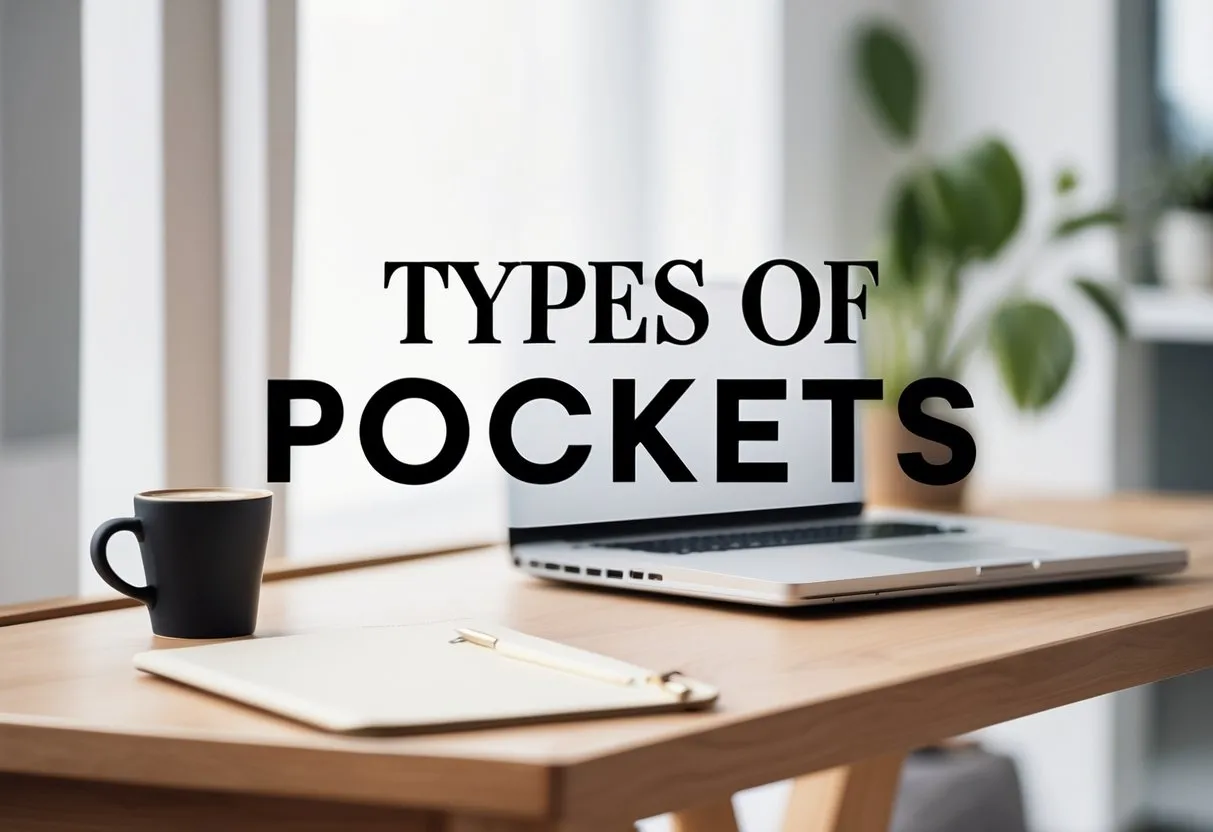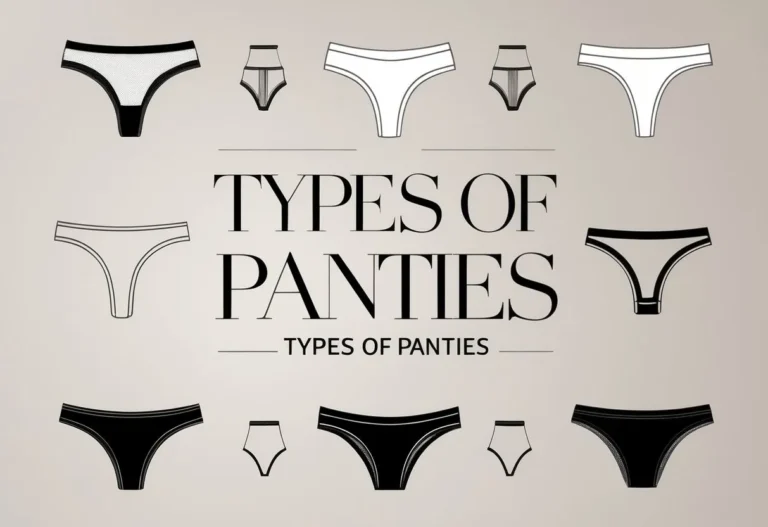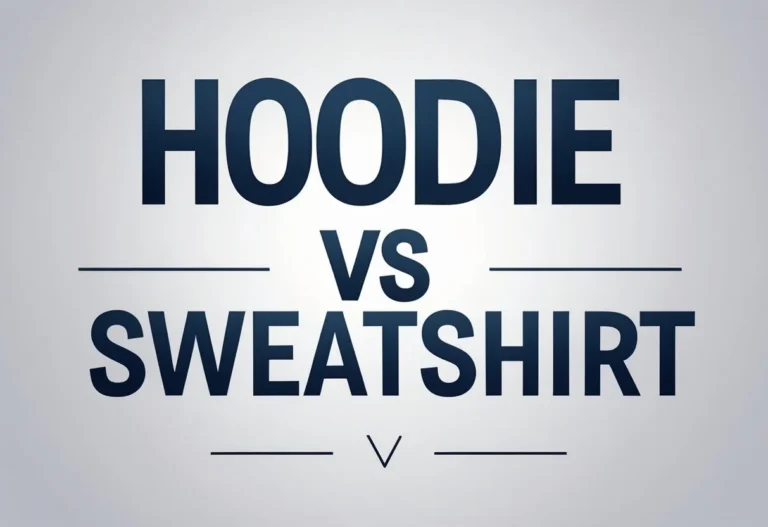21 Unique Types of Pockets: Styles, Uses & Fashion Guide
Pockets are essential elements of clothing that blend functionality with style. They come in many forms, each designed to serve a particular purpose, whether it’s for convenience, security, or fashion. Understanding the different types of pockets helps people choose the right style for their needs and enhances their overall outfit.
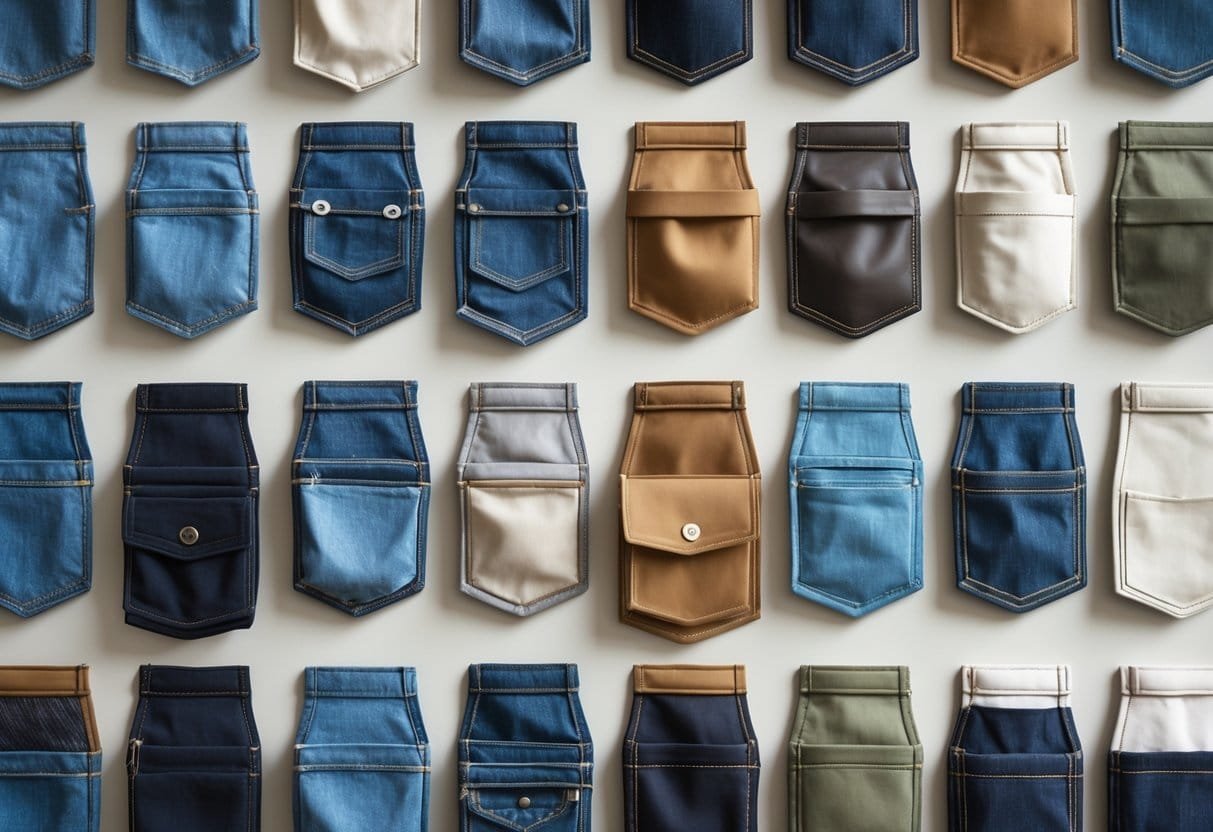
From classic patch pockets to hidden zip pockets and RFID-blocking designs, pockets cater to various uses. Some offer easy access to everyday essentials, while others provide security against theft or add a unique visual appeal. This wide range shows how pockets are more than simple holders—they are key features that balance practicality and aesthetic.
With so many options available, knowing these pocket styles allows individuals to make smarter wardrobe choices that fit their lifestyle and preferences. Whether they want a clean look or extra storage, there’s a pocket type suited to every occasion.
Key Takeaways
- Pockets vary widely to meet different practical and style needs.
- Security and convenience features are part of modern pocket designs.
- Choosing the right pocket enhances both outfit function and appearance.
Understanding Pocket Types

Pockets vary widely in their design, purpose, and placement. The choice of materials, how they are sewn, and where they are positioned all affect both their look and practicality. Some pockets focus on function, while others add style without real use.
Basic Pocket Construction
Pockets typically consist of a fabric pouch attached to a garment. The most common construction methods include patch, in-seam, and inset styles.
- Patch pockets are sewn on the outside and easily seen.
- In-seam pockets are hidden inside a seam, keeping a garment smooth and slim.
- Inset pockets are inserted into the fabric, often with a visible opening or flap.
The materials used depend on the garment type. Sturdier fabrics like denim support large, durable pockets, while lighter fabrics have smaller or softer pockets. The stitching and reinforcement at stress points help pockets hold weight without tearing.
Pocket Placement
Where a pocket sits on a garment impacts both style and ease of use. Common placements include front, side seams, and inside the garment.
- Front pockets offer easy access and are often decorative as well.
- Side-seam pockets keep items secure and don’t alter a garment’s shape.
- Inside pockets provide hidden storage, useful for valuables.
Proportion matters. Pockets too large for an item can look bulky, while very small pockets may be unusable. Proper placement balances convenience, comfort, and the garment’s overall design.
Functional Versus Decorative Pockets
Not all pockets are meant to hold items. Functional pockets serve practical uses such as carrying keys or phones. Decoratively, some pockets are sewn shut or designed with special shapes or trims purely to enhance appearance.
Functional pockets focus on usability:
- Secure closures like zippers or flaps prevent loss.
- Deep or expandable designs increase capacity.
Decorative pockets often appear on suits or dresses, where smooth lines are preferred. Although these pockets don’t open, their style elements contribute to the garment’s character without adding bulk.
Knowing the difference helps when choosing clothes for specific needs, such as daily use versus formal occasions.
Essential Pockets for Everyday Wear
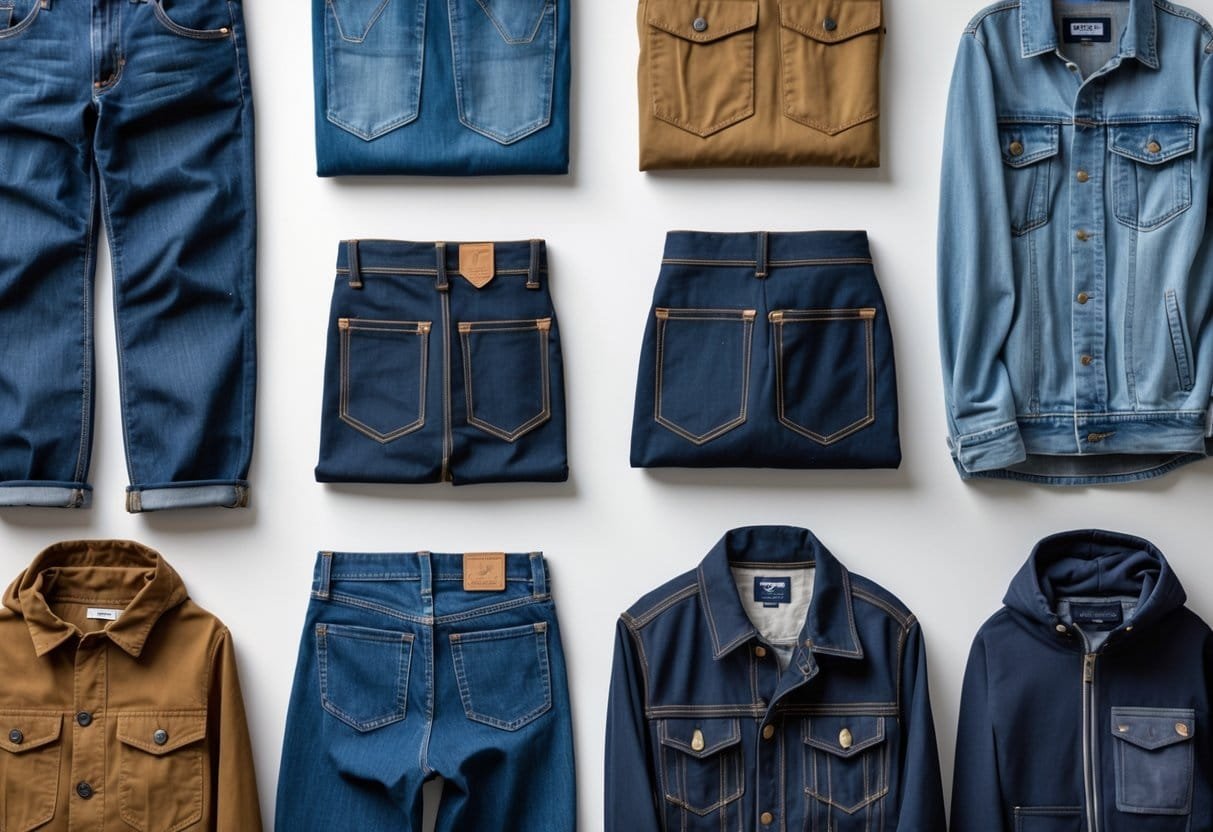
Everyday pockets need to balance style and function. They must hold common items securely while fitting well with a variety of outfits. The pockets detailed here are popular for their reliability, clean look, and practicality.
Patch Pocket
Patch pockets are sewn on top of the fabric, visible and easy to access. They usually have a simple square or rectangular shape.
This type often appears on shirts, jackets, and casual pants. It allows for quick storage of small items like keys or a phone.
Because patch pockets sit outside the garment, they add a casual, utilitarian style. Designers sometimes use unique shapes or stitching to make them stand out.
Patch pockets are low maintenance and durable, making them suitable for everyday use. Their simple design means they don’t add bulk or restrict movement.
Side Seam Pocket
Side seam pockets are hidden inside the garment’s side seams. The pocket opening is subtle and less visible than patch pockets.
They often appear in pants, skirts, and dresses to keep the garment’s silhouette smooth.
Side seam pockets are ideal for storing small items like coins or cards without changing the garment’s appearance.
Because they are sewn inside, they offer security but need careful design to allow easy hand access.
This pocket style helps maintain a tailored or sleek look while offering practical storage.
Welt Pocket
Welt pockets are narrow slits with a fabric strip (the welt) covering the edges. This creates a clean, refined look.
They are common in blazers, dress pants, and coats where a polished appearance is important.
Welt pockets usually have no extra bulk, maintaining smooth lines on the garment. They hold small essentials like wallets or business cards.
Because of their neat finish, welt pockets suit formal or semi-formal wear. They provide function without drawing attention.
Welt pockets sometimes include a button or flap for extra security but most often remain simple.
Jetted Pocket
Jetted pockets are a refined version of welt pockets. They feature two narrow fabric edges and no visible flap, blending seamlessly into the garment.
They are typically found on tuxedos, suit jackets, and formal trousers for a minimalist look.
Jetted pockets offer functionality while keeping the garment sleek. They are less obvious and help maintain sharp, clean lines.
This style is ideal for formal wear where subtlety and sophistication matter.
Because they add minimal bulk, jetted pockets are perfect for fitted clothing that requires a smooth surface.
Specialty Pockets for Style and Utility
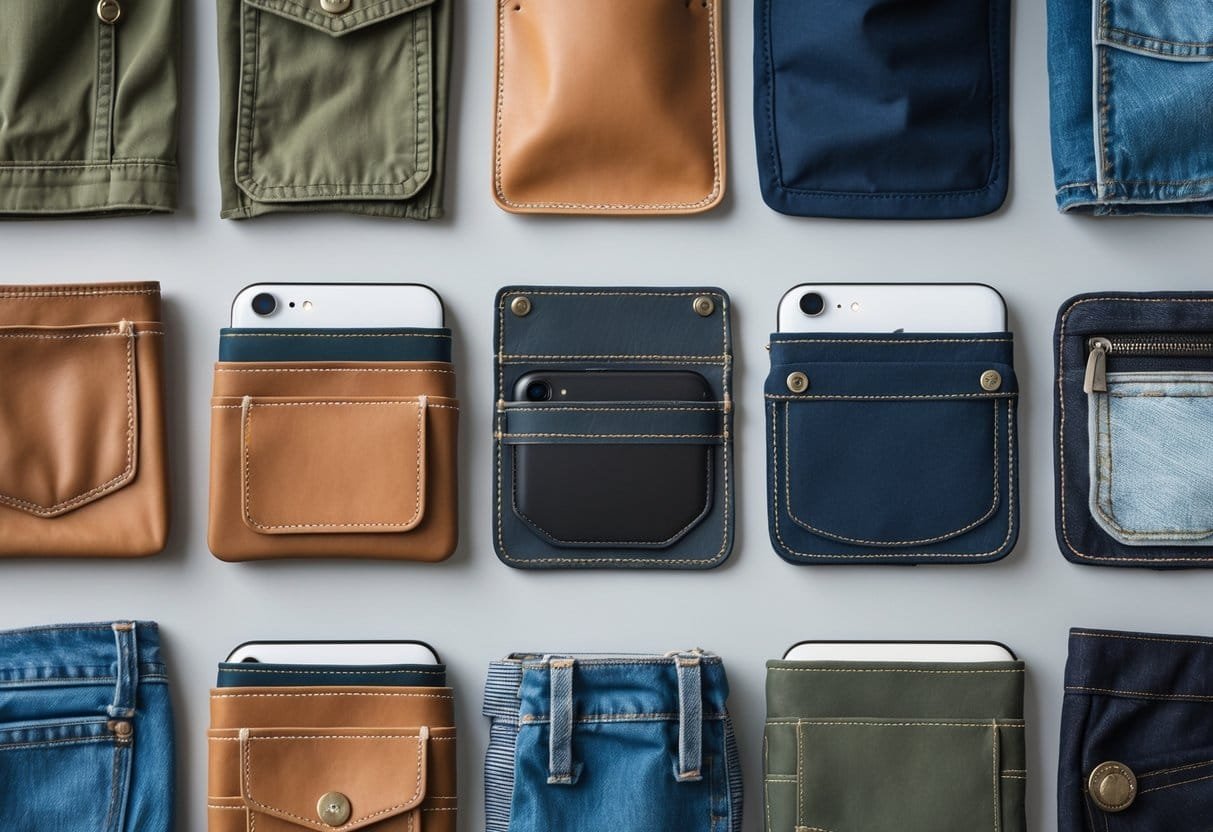
Certain pockets stand out because they balance practical use with distinct design features. These pockets often serve specific functions while contributing to a garment’s overall look. They can carry unique items or enhance comfort and accessibility.
Cargo Pocket
Cargo pockets are large, box-shaped pockets often sewn onto the sides of pants or jackets. They usually have pleats or expandable sections to hold bulky items like tools or phones securely.
They often feature a flap with buttons, snaps, or Velcro closures. This adds protection and keeps items from falling out, making them popular in outdoor and workwear clothing.
Cargo pockets add a rugged, utilitarian style to garments. Their size and shape make them useful for carrying essentials when a bag isn’t practical. They are best paired with casual or functional outfits like hiking gear or military-inspired clothes.
Kangaroo Pocket
A kangaroo pocket is a single large pocket placed on the front of sweatshirts or hoodies. It has openings on both sides, allowing hands to slide in and meet in the middle.
This pocket is useful for keeping hands warm or storing small items like phones and wallets. It adds a casual, sporty look to garments and is often found in athletic wear and street fashion.
Kangaroo pockets are designed for comfort and easy access rather than security. They complement relaxed, laid-back styles and work well with joggers or leggings for an all-around sporty outfit.
Coin Pocket
The coin pocket is a small, narrow pocket usually located inside or just above a front pants pocket. Its original purpose was to hold coins, but today it can store small items like keys or USB drives.
Typically found in jeans and casual trousers, the coin pocket adds a vintage or classic touch to the design without changing the garment’s functionality much.
Its size limits what can fit inside, but it offers quick access to tiny items that might otherwise get lost in larger pockets. This small detail often appeals to those who appreciate practicality combined with traditional style.
Pockets with Security Features

Certain pockets are designed to keep belongings safer and reduce the risk of loss or theft. These pockets often include closures or are placed discreetly to protect items like keys, wallets, and phones. Their designs focus on easy access while maintaining security.
Zipper Pocket
A zipper pocket uses a zipper closure to secure the contents inside. This type of pocket is common in jackets, pants, and bags where extra protection is needed to prevent items from falling out.
The zipper provides a strong barrier against accidental spills or pickpocketing. It is especially useful for small valuables such as cash, credit cards, or important documents.
Zipper pockets often feature sturdy stitching and durable zipper materials to withstand frequent use. This combination makes them a reliable choice for anyone needing secure storage on the go.
Flap Pocket
Flap pockets have a fabric flap that covers the pocket opening, often secured with buttons, snaps, or Velcro. The flap acts as a shield against items slipping out or unwanted access.
These pockets balance security with style and are frequently found on coats, cargo pants, and utility jackets. The flap offers extra coverage and adds a layer of protection not found in open pockets.
The closure choice affects ease of access. Buttoned flaps give stronger security but take longer to open, while snaps and Velcro offer quicker access with moderate protection.
Hidden Pocket
Hidden pockets are sewn inside garments or placed in less obvious locations. Their goal is to keep valuables out of sight, reducing the chance of theft.
Often used in travel clothing or jackets, these pockets are concealed behind lining or within seams. Their discreet nature allows users to carry sensitive items like passports, credit cards, or emergency cash safely.
They do not attract attention, making them ideal for crowded places. Hidden pockets usually lack external closures but rely on their placement and concealment to provide security.
Fashion-Forward Pocket Designs
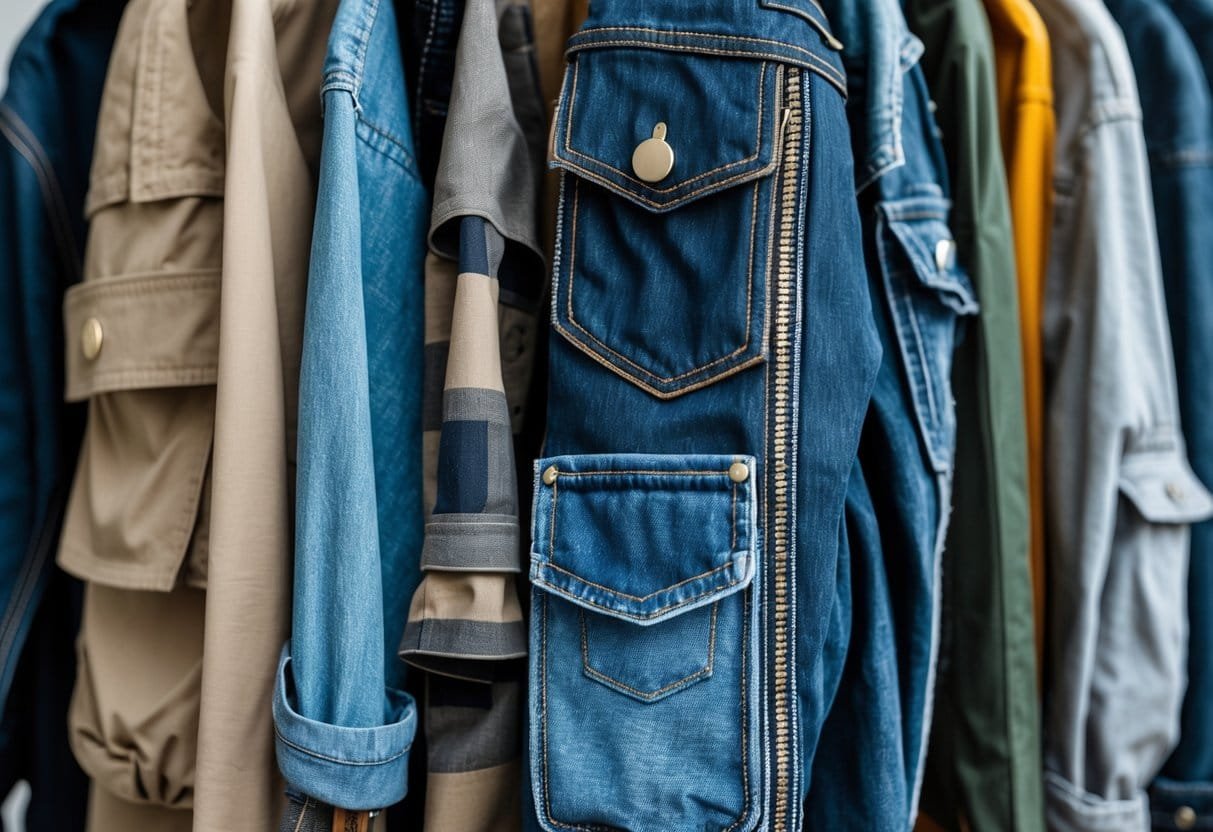
These pocket styles combine both function and style in unique ways. They add character to garments while offering practical storage. Their distinct shapes and placements set them apart from standard pockets.
Envelope Pocket
The envelope pocket gets its name from its flap, which resembles a folded envelope. This flap often has a pointed or triangular shape that covers the pocket opening. It helps keep items secure while adding a sharp design element.
Typically found on coats and blazers, envelope pockets offer both warmth and style. The flap protects the contents from falling out or being exposed. Their structured look gives a classic, tailored appearance that fits formalwear well.
The design balances practicality with a touch of refinement. It can be flat or slightly padded, depending on the garment. Envelope pockets also allow room for decorative stitching or button closures without sacrificing usability.
Slant Pocket for Types of Pockets
Slant pockets are cut at an angle and allow easy access. Unlike straight pockets, their diagonal opening makes it natural for hands to slide inside. This design is common in casual pants and jackets.
These pockets often enhance the silhouette by following the body’s curves. Their angled form gives a smoother, more dynamic look compared to patch pockets. Because they’re partially hidden in the seam, slant pockets maintain a clean profile.
Functionally, slant pockets hold everyday items like phones or wallets securely while staying low-profile. They are adaptable to various clothing types, from trousers to blazers, offering both practicality and style.
Ticket Pocket for Types of Pockets
The ticket pocket is a small, secondary pocket located just above a main pocket, usually on the right side of jackets. Originally designed for train or theater tickets, it now serves both aesthetic and practical roles.
This pocket is rectangular and often narrower and shorter than the main pocket. It adds an element of sophistication and utility by allowing quick access to small items.
The ticket pocket is popular in menswear, especially on suits and sport coats. It adds detail and can break up the flat surface of outerwear. Though small, it can hold coins, cards, or keys without bulking the garment.
Unique and Statement Pocket Styles

These pocket styles stand out because of their shape, structure, or special purpose. They add both function and distinctive design to garments. Their unique features make them important for particular uses or fashion statements.
Bellows Pocket for Types of Pockets
A bellows pocket is designed with pleats or folds that allow it to expand. This extra space makes it practical for carrying bulkier items without stretching the garment. It is common on outdoor clothing and cargo pants.
The pleated sides create volume when filled but lie flat when empty. This pocket often includes a flap or button for extra security. It balances utility with a rugged, durable look.
Bellows pockets are favored where storage matters as much as style. They work well for carrying gloves, snacks, or tools during outdoor activities.
Accordion Pocket for Types of Pockets
Accordion pockets have several layers or pleats, similar to a folded fan inside the pocket. This design increases storage capacity by expanding outwards.
Often sewn into jackets or outerwear, accordion pockets combine flexibility with accessibility. They can hold more than flat pockets while maintaining a neat appearance when not fully loaded.
The multi-layer structure also offers an eye-catching texture detail. Accordion pockets suit garments needing adaptable storage without heavy bulk.
Watch Pocket
The watch pocket is a small, often rectangular pocket found inside or above a larger pocket. Its original purpose was to hold a pocket watch securely, hence the name.
Today, watch pockets are mostly decorative or used for small items like keys or coins. They are common in jeans and casual trousers.
Though small, this pocket adds a classic touch. Its precise placement and size give garments a vintage or utilitarian feel.
Double Pocket
Double pockets consist of two layers or compartments stacked or side-by-side. This design separates storage for different items, improving organization.
They are often seen on workwear and outdoor clothing, where sorting tools or accessories is helpful. One pocket may have a flap or button while the other remains open or zipped.
Double pockets combine high functionality with a bold, practical style. They allow wearers to carry multiple items without adding bulk to a single pocket.
Choosing the Right Pocket for Your Outfit
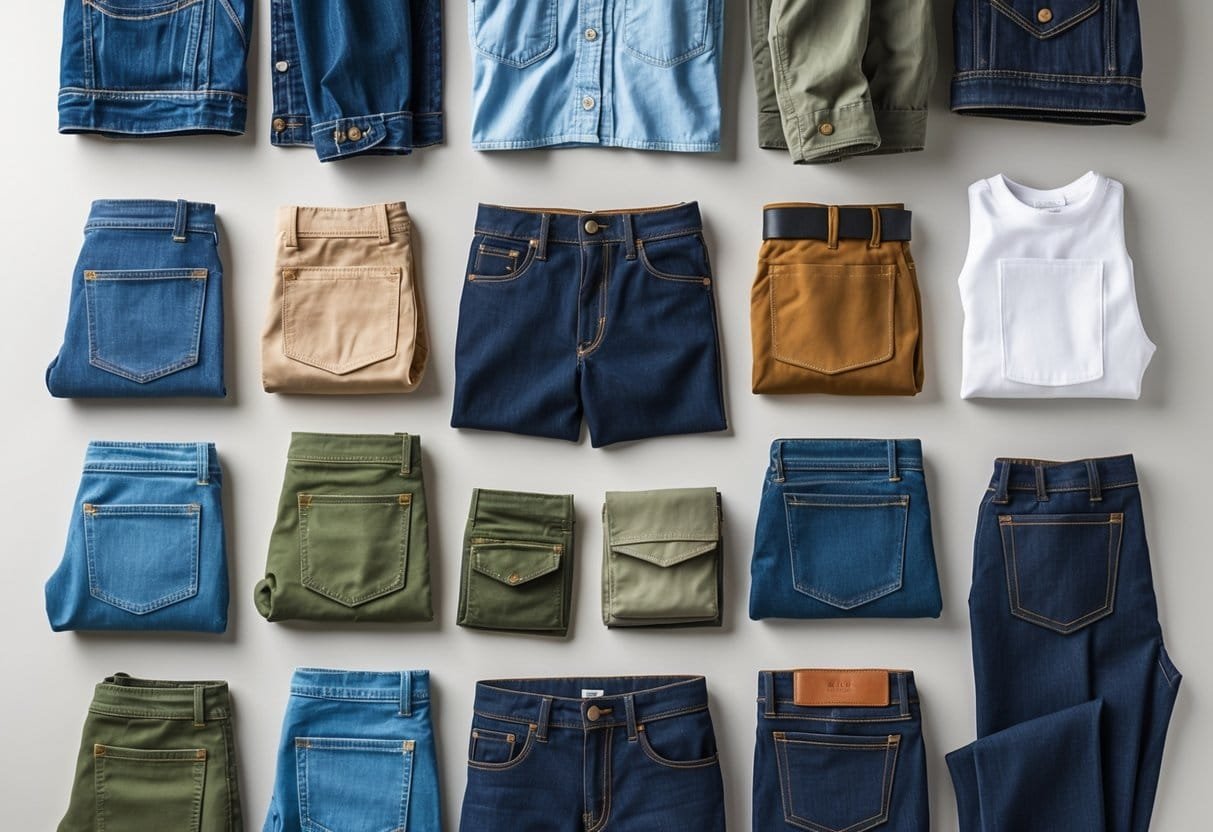
Selecting the appropriate pocket depends on the garment’s purpose, the balance between style and practicality, and personal preference. The pocket design should support the outfit’s function while enhancing its look. Custom features can add uniqueness and better meet specific needs.
Assessing Garment Needs for Types of Pockets
He or she should first consider what the garment is made for. Casual clothes benefit from large, accessible pockets like cargo or kangaroo pockets that hold essentials easily. Formal wear typically calls for sleek, minimal pockets such as welt or besom pockets that maintain clean lines.
The size and material of the garment also affect pocket choice. Heavy fabrics like denim support bulky pockets, while delicate fabrics require small or hidden pockets to avoid ruining the silhouette. Placement matters too—pockets should be easy to reach without disrupting the garment’s shape.
Balancing Fashion and Function
A pocket must serve its practical purpose without overpowering the design. Large pockets on a light blouse may look awkward, while tiny pockets on a heavy jacket might be useless. The pocket’s visibility can add style or keep the look subtle depending on fabric and garment type.
Decorative elements such as flaps, buttons, or zippers can increase visual interest. However, adding these features should not reduce pocket usability. Fashion and practicality should work together so the pocket complements the outfit and meets everyday needs.
Customizing Pockets for Personal Style
Customization allows a person or brand to tailor pockets to fit specific uses and style preferences. This might mean adding multiple compartments or choosing fabrics that match or contrast with the garment. Personalized stitching or motifs can enhance distinctiveness.
Custom pockets also address niche demands, such as anti-theft pockets for travelers or RFID-blocking linings for security in digital devices. This level of detail adds value and helps make the garment more functional and aligned with the wearer’s lifestyle or brand identity.
Frequently Asked Questions
Types of Pockets have evolved from practical uses to stylistic choices. Identifying pockets involves looking at their shape, placement, and openings. Functionality varies depending on size and accessibility, and some pockets offer added security or technology. Construction methods impact how hidden pockets are made, while trends change to fit current fashion needs.
What is the historical significance of different pocket designs?
Many pocket styles date back centuries and served specific practical needs. For example, patch pockets were originally simple storage on work clothes. Over time, pockets like coin pockets became symbols of style and utility. Their evolution reflects changes in how people carry everyday items.
How can I identify the various pocket styles on garments?
Look at where the pocket is placed and how it opens. Patch pockets are sewn on the outside, often square or rectangular. In-seam pockets blend into the side seams so they appear invisible. Welt pockets have a narrow piped edge. Flap pockets come with a cover that folds over the opening.
In terms of functionality, how do the different pocket types compare?
Patch and cargo pockets offer easy access and large space. In-seam and hidden pockets prioritize style and security by being less noticeable. Zip pockets add extra protection for small or valuable items. Kangaroo pockets keep hands warm while storing essentials.
What are the most innovative pocket designs in modern fashion?
Contemporary designs include RFID-blocking pockets that protect digital information. Pickpocket-proof pockets use slashed-resistant fabrics or tricky placements. Some shoulder strap pockets add quick access in bags. These innovations respond to security and convenience needs.
Can you explain the construction techniques for hidden or invisible pockets?
Hidden pockets are sewn inside seams or beneath fabric layers to avoid detection. They often use lightweight materials and precise stitching to keep the garment’s smooth shape. Some use additional fabric layers for security without adding bulk.
Which pocket styles are trending in the current fashion season?
Utility-focused pockets like cargo and patch flap are popular for casual and streetwear looks. Sleek slit pockets feature in formal and business attire. Kangaroo pockets remain common on hoodies for comfort and practicality. Designers also include decorative flap pockets to blend style and function.
